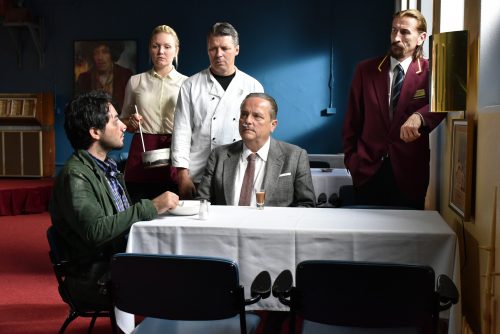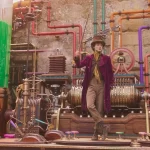The Other Side of Hope: Everybody’s Had to Fight to Be Free, by David Bax
Aki Kaurismäki’s The Other Side of Hope is replete with guys with shaggy hair and sunglasses playing folk rock on guitars. Whether they’re busking or gigging, these interstitial sections could seem like a fetishization of a specific, Beat hipster type of Americana. This would certainly be nothing new for Kaurismäki. But musical genres—especially over time—don’t recognize nationalities. These songs are as much Finnish as they are American (they’re sung in both Finnish and English) or any other nation whose citizens want to strap on an axe and an attitude. It’s a fitting metaphor for The Other Side of Hope’s questions about whether identity creates borders or the other way around and whether it even matters when it all causes so much harm.
Kaurismäki starts out telling two stories, one starring his longtime collaborator Sakari Kuosmanen and one starring first time actor Sherwan Haji (in a staggeringly great debut performance). Wikström (Kuosmanen) is a traveling salesman who gives up everything, including his marriage, to pursue his dream of opening a restaurant. Khaled (Haji) is a Syrian who escaped his home after most of his family was killed by a bomb. He has spent months traversing Europe, finally arriving in Helsinki in the dead of night as a stowaway on a freighter. For a time, the two narratives travel on parallel paths, then finally converge when Khaled joins the motley crew of Wikström’s restaurant employees.
Like all of Kaurismäki’s films, The Other Side of Hope is a comedy but, also like all of Kaurismäki’s films, there is a melancholy and potentially tragic river of humanism running beneath it. This time, as in 2011’s Le Havre, he is ruminating on the ongoing refugee crisis throughout Africa, the Middle East and Europe. He’s asking us, in fact, to not see it as a crisis at all but rather as the individual problems of individual people. Meanwhile, we are subtly invited to reflect on how different groups assimilate differently. A sequence involving sushi is the most hysterically funny bit in the whole movie but it’s also a brief showcase of Helsinki’s Japanese population. That happy interlude contrasts starkly with Khaled’s multiple, terrifying run-ins with a group of neo-Nazis.
Kaurismäki juxtaposes such moments of sobering modern-day reality with his usual, heightened aesthetic. He doesn’t just frame his shots like they’re under a proscenium; even his boxy art direction and high-contrast lighting make it feel like you’re watching a production by an underfunded but uncommonly talented community theatre troupe.
It’s an arch and therefore ironic approach, which makes it all the more powerful when Kaurismäki drops the irony in the moments when Khaled talks about his experiences as a Syrian and a refugee. Haji takes control of a still frame like a seasoned professional, relating unembellished the horrors of his life and his commitment to being reunited with his sister, the only family member he has left. What matters is not where Khaled is from, what language he speaks or what color his skin is. What matters is whom he loves and who loves him in return. This simple truth is both universal and beautiful. Like music.





























